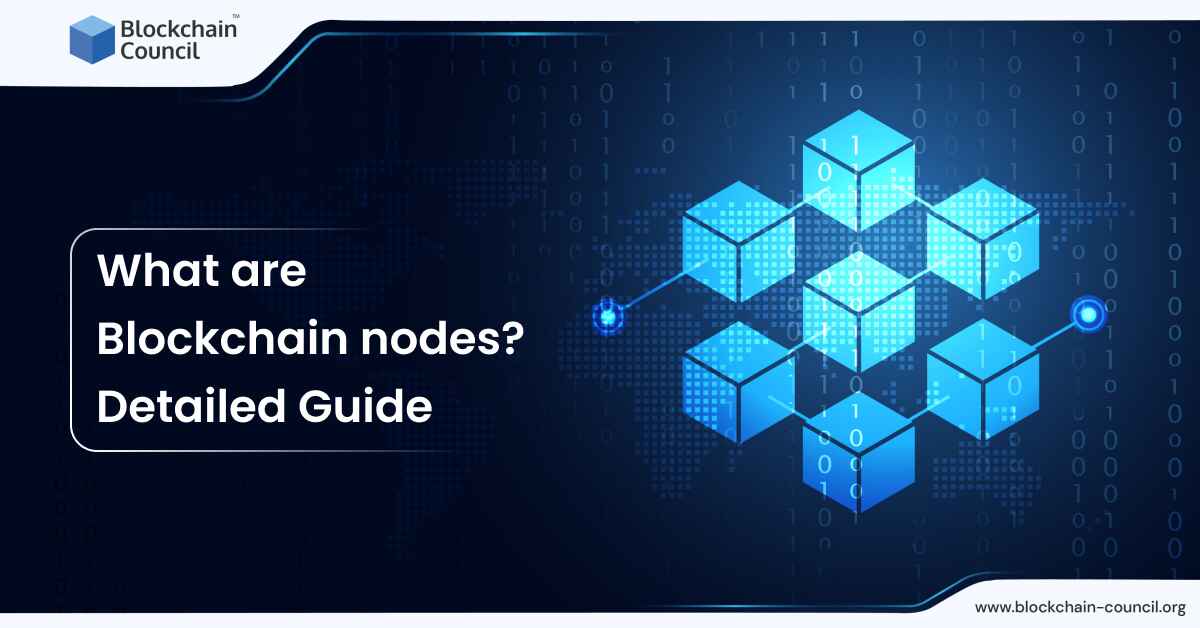
- Pradeep Aswal
- June 15, 2024
What are Blockchain nodes?
Blockchain nodes are network stakeholders and their devices are authorized to keep track of the distributed ledger and serve as communication hubs for various network tasks.
A Blockchain node’s primary job is to confirm the legality of each subsequent batch of network transactions, known as blocks. In addition, allocating a unique identifier to each node in the network helps to distinguish a node from other nodes easily.
A Proof-of-Work (PoW) Blockchain, such as Bitcoin (BTC) or Monero (XMR), includes miners who are responsible for the following.
Only “full nodes” must store all Blockchain transactions on their devices. These nodes are in charge of validating blocks and transactions.
On the other hand, lightweight nodes have low storage requirements because they just need to download block headers to verify transactions. A block reward is not always included in either of these versions of a full node.
Functions of nodes
Securing a Blockchain
The availability of a Blockchain node is another approach to classifying it. For example, an “online node” is a node that is assigned to send updates all across the network consistently and always to be online.
On the other hand, offline nodes only need to download the most recent copy of the ledger every time they rejoin the network to stay in sync with the rest. This process is termed synchronizing with the Blockchain.
A single node can potentially operate a complete Blockchain, but because it is kept on a single device, it is particularly vulnerable to power outages, hackers, and systemic malfunctions. The more complete nodes a Blockchain has, the better it can withstand such disasters. It will be difficult for a corrupt party to wipe out all of the Blockchain data at once since the data is dispersed over so many machines. A single node may potentially keep a full Blockchain running even if a significant number of nodes fall offline and become unavailable due to a worldwide catastrophe.
Even if all nodes fall, it only takes one node with the whole Blockchain history to back up and restore access to all the data. If you want to know more about Blockchain nodes then a Blockchain Certification by the Blockchain Council will help you out!
Node Vs. Miner
Node
- Participates in the peer-to-peer network and stores a copy of the Blockchain.
- Requires only software to connect to the network.
- Has no direct financial incentive for running a node.
- Can be a full or light node, depending on the amount of data they store.
- Participates in the consensus process by verifying transactions and blocks.
- Can be run by anyone, leading to a more decentralized network.
- Uses much less energy than mining..
Miner
- Validates transactions and creates new blocks.
- Requires specialized hardware and high computing power to solve complex mathematical problems.
- Earns rewards in the form of newly minted cryptocurrency and transaction fees.
- Must be a full node in order to participate in mining.
- Determines the order of transactions and creates new blocks by solving a cryptographic puzzle.
- Mining is often concentrated in the hands of a few large mining pools, leading to concerns about centralization.
- Requires high energy consumption due to the intensive computation required for mining.
Setting up a node
Setting up any type of node can be a complex process, and things might seem tricky if you are attempting to do so without much prior experience. However, there are alternative ways to connect, such as turning to a reliable provider, such as the Blockchain-as-a-service provider NOWNodes, which will allow you to connect within less than a second by using a simple API key. Get access to crypto nodes.
Types of nodes
Nodes are an essential part of the Blockchain infrastructure, as they are responsible for validating transactions and adding new blocks to the chain. In this article, we will discuss three of the most common types of nodes: Full nodes, Light nodes, and Miner nodes.
Full Nodes
Full nodes are the most important type of node in the Blockchain network, as they maintain a complete copy of the Blockchain ledger. These nodes download and store a copy of every transaction and block on the network, which allows them to independently verify the entire Blockchain history. Full nodes are the backbone of the Blockchain network and are essential for maintaining its integrity.
Full nodes operate in a peer-to-peer network, meaning they communicate with other nodes to ensure that the Blockchain is up-to-date and accurate. They validate transactions and blocks by checking for discrepancies, such as double-spending or invalid signatures, before adding them to the Blockchain. Full nodes are typically run by cryptocurrency enthusiasts, Blockchain developers, and organizations that require a high level of security and control over their Blockchain transactions.
Light Nodes
Light nodes, also known as SPV (Simplified Payment Verification) nodes, are a more lightweight version of full nodes. They are designed to operate on devices with limited storage and processing power, such as smartphones and tablets. Light nodes do not download the entire Blockchain but rather a small portion of it that contains information relevant to their transactions.
Light nodes rely on full nodes for transaction validation and block verification. They communicate with several full nodes in the network to obtain the information they need to verify their transactions. Light nodes are faster and more efficient than full nodes but are also less secure, as they rely on full nodes for validation.
Miner Nodes
Miner nodes are responsible for verifying transactions and adding new blocks to the Blockchain. These nodes perform complex calculations to solve mathematical problems that allow them to create new blocks and receive rewards in the form of cryptocurrency.
Miner nodes require specialized hardware and software to perform the calculations required for mining. They are typically run by large mining pools or individuals who have the resources to invest in the necessary equipment. Miner nodes are essential to the Blockchain network, as they ensure that new transactions are processed and added to the Blockchain in a timely and secure manner.
Blockchain Nodes in Different Blockchain Networks
Blockchain technology comprises a decentralized ledger of all transactions across a network. Central to this network are Blockchain nodes, the linchpins of Blockchain functionality. These nodes maintain the integrity and consensus of the Blockchain while providing security and reliability. Below, we explore the nodes within various Blockchain networks, highlighting their unique features and contributions to their respective ecosystems.
Ethereum Nodes
Ethereum nodes are computers that run software connecting to the Ethereum network to verify transactions and blocks. Every Ethereum node contains an execution client, responsible for smart contract execution and state transitions, and a consensus client, handling the proof-of-stake mechanism. There are different types of Ethereum nodes: full nodes, light nodes, and archive nodes, each playing a vital role in the network’s health and efficiency.
Bitcoin Nodes
In the Bitcoin network, nodes are vital for transaction and block validation. Each Bitcoin node runs software that fully validates transactions and blocks. Full nodes store the entire Blockchain ledger and contribute to the network by verifying and relaying transactions and blocks to other nodes, while light nodes provide more lightweight functionality, relying on full nodes for their information.
Other Prominent Blockchain Networks and Their Nodes
Aside from Ethereum and Bitcoin, several other Blockchain networks utilize nodes in innovative ways:
- R3 Corda employs a unique consensus mechanism where transactions are interlinked cryptographically without the traditional block batching, offering real-time transaction processing.
- IBM Blockchain presents a private, decentralized network favored by enterprise clients for its seamless integration with enterprise cloud and legacy technologies.
- Hyperledger Fabric, championed by the Linux Foundation, provides a modular architecture for enterprise applications, enhancing security and privacy through its channel-based transaction isolation.
- Hyperledger Sawtooth offers versatility in consensus mechanisms, including the novel “proof of elapsed time,” suited for different enterprise use cases.
- Tezos supports a dynamically upgradable protocol and has been recognized for its proof-of-stake consensus mechanism that enhances efficiency.
- EOSIO optimizes for decentralized applications with a complex consensus mechanism that purportedly outperforms older ones like Ethereum’s.
- Stellar focuses on DeFi applications and has been adopted for cross-border transactions, leveraging its unique Stellar Consensus Protocol.
- ConsenSys Quorum, a variation of Ethereum developed by JPMorgan, is tailored for high-speed transactions on a private network, making it ideal for financial institutions.
How to Create a Blockchain Using Node.js?
Prerequisites
To get started, you’ll need to have Node.js installed on your system. If you haven’t already, download and install Node.js from the official website.
Setting Up Your Environment
Initialize Your Project Begin by creating a new directory for your Blockchain project. Open your terminal and navigate to the directory where you want to create it. Then, run the following command:
mkdir my-Blockchain
cd my-Blockchain
Initialize a Node.js Application Inside your project directory, initialize a Node.js application by running:
npm init -y
This will generate a package.json file, which is essential for managing dependencies.
Installing Dependencies Next, you’ll need to install the necessary dependencies for your Blockchain project. We’ll use the crypto-js library to handle cryptographic operations, which are crucial for Blockchain security. Run:
npm install crypto-js –save
Creating Your Blockchain
Now, let’s start building your Blockchain step by step:
Block Structure Create a new JavaScript file, block.js, to define the structure of a block in your Blockchain. A block typically consists of the following components:
- Index
- Timestamp
- Data
- Previous Hash
- Hash
Genesis Block
Every Blockchain starts with a genesis block. Create it by adding the following code to your main.js file:
const Block = require(‘./block’);
const genesisBlock = new Block(0, “01/01/2022”, “Genesis Block”, “0”);
Blockchain Class
Build a Blockchain class to manage your blocks. This class should include methods for adding new blocks and ensuring the integrity of the chain.
Mining Blocks
Implement a mining function to create new blocks. Mining is the process of solving a cryptographic puzzle to add a new block to the chain.
Testing Your Blockchain
Finally, test your Blockchain by adding some sample transactions and mining blocks.
How do nodes work together to maintain the Blockchain?
Each node in the Blockchain is a separate entity that operates independently and communicates with other nodes in a peer-to-peer network.
The primary function of nodes is to verify transactions and add new blocks to the Blockchain. When a user initiates a transaction, it is broadcast to the network, and all the nodes receive a copy of it. Full nodes independently verify the transaction by checking its validity, such as whether the user has sufficient funds, if the transaction has been digitally signed by the sender, and if it follows the protocol rules.
Once a full node validates the transaction, it adds it to its copy of the Blockchain ledger. At this point, other nodes in the network can request the new block from the full node and verify it themselves. Each node in the network maintains its copy of the Blockchain, which is continually updated as new blocks are added. Nodes also communicate with each other to ensure that they have the latest copy of the Blockchain, as new blocks are added to the network.
Nodes also play an essential role in maintaining the security of the Blockchain network. Full nodes, for example, are designed to validate every transaction and block independently, which makes it difficult for a bad actor to manipulate the Blockchain. If there is a discrepancy in the Blockchain, such as an invalid transaction or double-spending, the nodes will detect it and flag it as invalid.
Miner nodes, on the other hand, are responsible for adding new blocks to the network. These nodes perform complex calculations to solve mathematical problems, which allow them to create new blocks and receive rewards in the form of cryptocurrency. Once a miner node creates a new block, it broadcasts it to the network, and the full nodes validate it before adding it to their copy of the Blockchain. This process ensures that the Blockchain remains secure and that the rewards for mining are distributed fairly.
In addition to verifying transactions and adding new blocks, nodes can also perform other functions, such as maintaining smart contracts and facilitating peer-to-peer transactions. Light nodes, for example, are a more lightweight version of full nodes that can operate on devices with limited storage and processing power, such as smartphones and tablets. They communicate with several full nodes in the network to obtain the information they need to verify their transactions, which makes them faster and more efficient than full nodes. A Blockchain certification from the Blockchain Council can help you understand this concept better.
Importance of nodes in Blockchain technology
Masternode: A Brief Overview
Masternodes are generally more powerful than regular nodes. Masternodes are used in several Blockchains. Masternodes, in addition to validating, preserving, and broadcasting transactions, may also assist other events on the Blockchain, depending on their nature, such as managing voting events, providing protocol execution, and enforcing the rules of the respective Blockchain. Masternodes are usually available all the time (24/7), and they have a lot more RAM than regular nodes. A master node may be compared to running a very big server on the network. Because hosting a master node necessitates significantly more resources (energy, uptime, maintenance, storage space, and memory), it is frequently compensated with interest.
Running a Node vs. Running a Masternode
Thousands of nodes can be active at the same time on some Blockchains. Anyone may run a node by downloading a Blockchain’s transaction history. Many crypto and Blockchain enthusiasts volunteer to run nodes. They do it to contribute to the Blockchain community’s development, security, and integrity, but it’s also a fun pastime that makes them feel like they are a part of the project. Running a node is reasonably straightforward for someone with a basic understanding of technology and does not necessitate many resources.
On the other hand, some Blockchains currently have so much transaction data that running a complete node demands a lot of RAM on a device. As a result, wallet programs are used by many crypto users who only wish to use a Blockchain. They may broadcast transactions from their wallet without downloading the complete Blockchain history to their smartphone using these apps.
In contrast, not just anyone can run a masternode. The host must deposit a minimum (sometimes fairly big) quantity of crypto as collateral because the power of operating a masternode might be exploited. When the masternode host breaks the Blockchain’s regulations, the collateral acts as a hostage. A masternode host’s interest rate is computed based on their collateral deposit.
For example, Dash (DASH) is a popular Blockchain with built-in masternode functionality.
Running a masternode on the Dash Blockchain is expensive. To host a masternode on this Blockchain, a minimum of 1,000 DASH is required, which is presently worth $200,000 at the time of writing. However, the DASH Blockchain returned an annual interest rate of 11%, making it a potentially tempting investment.
According to a website that records the number of masternodes currently active on the DASH network, there are up to 4,941 active masternodes at the time of writing, with 1284 in the United States and 1038 in the Netherlands.
Masternode Vs. Full Node
Running a Blockchain node
Benefits of Running a Node
Running a node on a Blockchain network comes with numerous benefits, including:
- Increased Security – Running a node enhances the security of the network by validating transactions and verifying the information stored on the Blockchain.
- Decentralization – Running a node contributes to the decentralization of the network, reducing the reliance on centralized servers and giving more power to individual users.
- Control over Transactions – Running a node allows users to control their own transactions by broadcasting and validating them independently without relying on third-party nodes or servers.
- Transparency – Running a node provides access to a transparent and immutable record of all transactions on the network, making it easier to track and verify transaction histories.
- Incentives – Depending on the Blockchain network, running a node can provide incentives such as transaction fees, new token rewards, and governance rights.
Requirements for Running a Node
To run a node, the following are some of the essential requirements:
- Hardware Resources – The user must have a computer with sufficient processing power, storage, and memory to handle the demands of running the node.
- Network Connection – A stable and reliable internet connection is necessary to ensure the node stays in sync with the rest of the network.
- Software – The user must download and install the appropriate software for the specific Blockchain network they wish to participate in.
- Technical Knowledge – Basic technical knowledge of Blockchain technology is necessary to configure and troubleshoot the node.
Steps to Set Up and Run a Node
The following are the basic steps to set up and run a Blockchain node:
- Choose a Blockchain Network – The user must decide which Blockchain network they wish to participate in and download the relevant software.
- Install the Software – The user needs to install the software and follow the installation instructions.
- Sync the Node – Once the software is installed, the node must be synced with the rest of the network by downloading the Blockchain.
- Configure the Node – The user must configure the node by setting up their account, adjusting the settings, and enabling port forwarding on their router.
- Run the Node – After the node is configured, the user can start running their node, validating transactions, and contributing to the network.
Challenges of Running a Node
Running a node on a Blockchain network comes with its share of challenges, including:
- High Resource Requirements – Running a node requires significant hardware resources, making it costly to maintain.
- Technical Complexity – Setting up and running a node can be technically challenging, especially for users with limited technical knowledge.
- Security Risks – Running a node can expose the user to security risks such as hacking and theft, requiring the node to be secured using best practices.
- Network Instability – The Blockchain network can be unstable at times, leading to issues with the node’s performance.
Node Synchronization
The Process of Synchronization
Blockchain nodes must synchronize to ensure that they all have the same copy of the Blockchain ledger. This synchronization process can be divided into two main phases:
Initial Blockchain Download (IBD)
The journey of a Blockchain node begins with the Initial Blockchain Download, commonly referred to as IBD. During this phase, a node downloads the entire Blockchain from the genesis block, the first block in the chain, up to the most recent one. This can be a resource-intensive task, especially for Blockchain networks with a long history.
IBD ensures that a node has a complete and up-to-date copy of the Blockchain, enabling it to validate transactions and participate in the consensus process effectively.
Maintaining Consensus
Once a node has completed the IBD, it enters the phase of maintaining consensus. Consensus is the process by which all nodes in a Blockchain network agree on the validity of transactions and the order in which they are added to the Blockchain. It’s a fundamental aspect of Blockchain security.
Nodes achieve consensus through various consensus algorithms, such as Proof of Work (PoW) or Proof of Stake (PoS), depending on the Blockchain’s design. They work together to validate transactions, add new blocks, and secure the network from malicious actors.
Challenges and Solutions
Node security and privacy
As the popularity of nodes continues to grow, it is important to understand the security and privacy risks associated with running a node
Risks associated with running a node
Running a node comes with several risks, including:
- Malware attacks: A node that is not properly secured can be vulnerable to malware attacks. Malware can be used to steal sensitive data, such as private keys, which can lead to financial loss.
- DDoS attacks: Distributed denial of service (DDoS) attacks can overload a node with traffic, causing it to crash and potentially disrupting the entire network.
- Sybil attacks: Sybil attacks occur when an attacker creates multiple nodes and uses them to gain control of the network.
- Chain reorganization attacks: Chain reorganization attacks can occur when a node is running an older version of the software, which can result in the node being left behind in the Blockchain. This can lead to financial loss for the node operator.
Measures to secure and protect nodes
To secure and protect a node, you should consider the following measures:
- Use a firewall: A firewall can help prevent unauthorized access to your node. Ensure that only necessary ports are open.
- Use antivirus software: Antivirus software can detect and remove malware on your node.
- Keep software up-to-date: Keep your node software up-to-date to avoid chain reorganization attacks.
- Use secure passwords: Use strong, unique passwords for your node.
- Enable two-factor authentication: Two-factor authentication can provide an additional layer of security for your node.
- Use a VPN: Using a virtual private network (VPN) can help protect your node’s privacy and prevent DDoS attacks.
Importance of node privacy and anonymity
Node privacy and anonymity are critical for ensuring the security and privacy of the Blockchain network. Nodes that are not anonymous can be vulnerable to targeted attacks, which can compromise the entire network. Nodes are the fundamental building blocks of the internet, and they are responsible for sending and receiving data packets between devices. Every time we access the internet, we leave a digital footprint that can be traced back to us. This is where node privacy and anonymity come in, as they help to protect our online identities and sensitive information from prying eyes.
One of the primary reasons why node privacy is essential is that it helps to prevent identity theft. When we access the internet, we often enter our personal details such as names, addresses, and credit card information. If this information falls into the wrong hands, it can be used to steal our identity and wreak havoc on our lives. By using tools that protect our node privacy, we can prevent this from happening and ensure that our sensitive information remains safe and secure.
Anonymity is another critical aspect of node privacy, as it helps to protect our online identities from being tracked and monitored by third parties. There are many reasons why someone might want to remain anonymous online, such as avoiding targeted advertising, protecting their political views, or avoiding harassment. By using tools that protect our node anonymity, we can ensure that our online activities remain private and secure.
In addition to protecting our personal information and online identities, node privacy and anonymity are also essential for maintaining a free and open internet. As more and more governments around the world seek to control and censor online content, it is critical that individuals have the ability to access and share information freely and anonymously. By using tools that protect our node privacy and anonymity, we can help to ensure that the internet remains a place of free expression and open discourse.
Node Upgrades and Forks: The Crucial Aspects
In the world of Blockchain technology, staying up-to-date is not a choice; it’s a necessity. Node upgrades and forks are two fundamental aspects that underscore the importance of maintaining a well-functioning Blockchain network.
Importance of Node Updates
Node updates are akin to software updates for your computer or smartphone. They are essential for ensuring the efficiency, security, and compatibility of a Blockchain network. Here’s why keeping your nodes updated is paramount:
1. Ensuring Compatibility
Blockchain networks consist of numerous nodes operated by various participants. These nodes must communicate seamlessly to maintain the integrity of the network. When updates are released, they often contain improvements in protocols and security patches. By keeping your node software current, you ensure that it remains compatible with the rest of the network.
Outdated nodes can become a bottleneck, causing delays and potential disruptions in the Blockchain’s operation. It’s like trying to join a group conversation with an outdated language dictionary – you’ll struggle to understand and be understood.
2. Impact on Consensus
Consensus is the heart of any Blockchain network. It’s the mechanism that ensures all participants agree on the validity of transactions and the state of the ledger. Node upgrades play a significant role in this delicate balance:
- Security Enhancements: Blockchain networks are attractive targets for malicious actors. Node updates often include security enhancements to protect against evolving threats. Failing to update your node may expose it to vulnerabilities, putting your assets and the network’s security at risk.
- Protocol Improvements: The consensus protocol can evolve to become more efficient and robust. Upgrading your node allows you to participate in these improvements, contributing to the overall health of the network. It’s like adopting a new and improved set of rules for a game – you can play more efficiently and fairly.
- Avoiding Forks: Forks can occur when there is a disagreement within the network, leading to the creation of two separate chains. Node upgrades often include changes to prevent or mitigate forks. By keeping your node updated, you help maintain the network’s coherence, avoiding the potential chaos of a fork.
Dealing with Forks
Blockchain technology, with its decentralized and transparent nature, has revolutionized various industries. However, to truly understand its inner workings, it’s crucial to delve into the intricacies of Blockchain nodes and how they handle forks.
Hard Forks Vs. Soft Forks
Node Operator Choices
Now, let’s explore the choices node operators have to make when faced with forks. These choices are pivotal in ensuring the stability and integrity of the Blockchain.
- Upgrade: Node operators can choose to upgrade their software to the latest version that supports the new protocol introduced in a fork. This option is common in soft forks, where there is a high degree of backward compatibility.
- Stay on the Current Chain: Some node operators may opt to stay on the existing Blockchain, especially in the case of a hard fork that they disagree with. This choice means they continue to validate transactions on the original chain.
- Switch to the New Chain: Conversely, node operators can decide to switch to the new chain, embracing the changes brought about by the fork. This often involves installing updated software that supports the new protocol.
In the dynamic world of Blockchain, these decisions are not to be taken lightly. Node operators need to consider factors such as network consensus, the potential impact on their operations, and the long-term viability of the Blockchain.
The Intersection of AI and Blockchain Technology
The integration of AI and Blockchain technology is a burgeoning field with substantial potential to transform the efficiency and security of Blockchain networks. The application of AI can significantly enhance the scalability, efficiency, and adaptability of Blockchain through AI-enabled consensus mechanisms, which are designed to optimize the performance of these distributed systems.
AI’s role in managing and optimizing node operations is critical as it can introduce advanced analytics that refine Blockchain network performance. Predictive analytics powered by AI can be leveraged to anticipate transaction bottlenecks, allowing for preemptive optimization of the network’s throughput and stability. Additionally, AI can contribute to more secure and robust Blockchain networks by enhancing security protocols, thus providing a more fortified environment against cyber threats.
Moreover, Blockchain technology can reciprocate by making AI operations more coherent and understandable. Blockchain’s ledger capability can transparently record all data and variables that inform machine learning decisions, thereby making the AI’s decision-making process more traceable and accountable. This symbiotic relationship not only improves operational efficiency but also enhances trust in AI’s decision-making processes by providing a clear audit trail.
The intersection of these technologies also extends to the realm of smart contracts and business process automation. By integrating AI, Blockchain can optimize data processing, improve the execution and dispute resolution of smart contracts, increase the authenticity and security of data, and enable the augmentation of AI capabilities, thus paving the way for more autonomous and intelligent business operations.
The Future of Blockchain Nodes with AI Integration
The integration of AI with Blockchain nodes is paving the way for a more autonomous, credible, and intelligent future for Blockchain technologies. Blockchain’s inherent characteristics, such as decentralization, immutability, and anonymity, make it a trustworthy foundation for AI, enhancing AI’s decision-making processes and promoting data transparency and traceability.
AI contributes to the Blockchain by optimizing its construction, improving security, efficiency, and governance, and supporting the life-cycle of Blockchain transactions. The decentralization of computing power via Blockchain is beneficial for AI’s distributed computing needs, thereby addressing the increasing computational complexity and data volumes.
Challenges persist, including Blockchain’s scalability and energy consumption and AI’s interpretability. However, the synergy between these technologies can resolve these issues and empower each other, with AI providing advanced analytics and Blockchain ensuring data integrity and privacy.
The fusion of AI and Blockchain holds significant potential, promising a more secure, fair, and efficient technological landscape, although it necessitates careful consideration of the balance between various parameters like security, throughput, and decentralization. The future will likely see these technologies converging further, leading to novel applications and more robust frameworks for digital transactions and interactions.
Why Blockchain and AI Knowledge is Essential
Blockchain technology and Artificial Intelligence (AI) are revolutionizing numerous industries by offering enhanced security, efficiency, and automation. Understanding Blockchain nodes, which are essential components of a Blockchain network, requires a grasp of both Blockchain technology and AI.
- Improved Security and Trust: Blockchain nodes contribute to the security of the network by maintaining a copy of the distributed ledger. Knowledge of AI can contribute to predictive security measures, identifying potential threats to node security before they become an issue.
- Efficiency in Operations: AI algorithms can analyze the vast amount of data processed by Blockchain nodes to optimize transaction processing and network efficiency.
- Smart Decision-Making: AI can assist in making decisions on the Blockchain network, such as consensus mechanisms, by analyzing past transactions and predicting outcomes.
- Enhanced Data Analysis: Blockchain nodes collect immense amounts of data, and AI can provide advanced data analysis capabilities, leading to insights that can improve the Blockchain’s performance.
- Automation of Processes: AI’s machine learning capabilities can automate many of the processes involved in maintaining and operating Blockchain nodes, reducing the need for manual intervention and the possibility of human error. Incorporating AI and Blockchain knowledge into the management of Blockchain nodes could lead to innovative solutions that enhance the functionality, efficiency, and reliability of Blockchain networks.
Leveraging Your Blockchain and AI Knowledge
In the dynamic realms of Blockchain and artificial intelligence (AI), the key to success lies in not just staying afloat but soaring above the technological waves. Beyond hands-on experience, recognized certifications stand as beacons of expertise, signaling to the world that you are not merely following trends but leading the way. In this section, we introduce Blockchain Council’s AI certifications and guides, unraveling the layers of benefits awaiting those who choose to embark on this certification journey.
Certification Validation: Elevating Your Expertise
In the competitive landscape of Blockchain and AI, standing out is essential. Certifications provide a tangible validation of your skills, acting as a testament to your dedication to excellence. Imagine having the power to showcase not just your experience but a formal acknowledgment of your proficiency. This is what certifications bring to the table—an authoritative stamp that resonates in the professional realm.
Blockchain Council’s AI Certifications: A Comprehensive Overview
Delve into a world where cutting-edge meets educational excellence with Blockchain Council’s array of AI certifications. Tailored to cover the breadth and depth of AI technologies, these certifications are more than badges; they are keys to unlocking the doors to a future shaped by innovation. Whether you are delving into machine learning, neural networks, or natural language processing, Blockchain Council’s certifications ensure you are equipped to navigate the intricacies of the AI landscape.
Why Choose Blockchain Council for Your Certification Needs?
Embarking on the journey of certification is not just about acquiring a badge; it’s about choosing a path that propels your career forward. Here’s why opting for Blockchain Council is a strategic decision:
1. Industry-Recognized Certifications
In the dynamic landscape of Blockchain, AI, and Web3, having certifications that speak the industry’s language is paramount. Blockchain Council’s certifications are not just pieces of paper; they are stamps of approval from the very industry you aspire to thrive in. Employers recognize and respect these credentials, making them a powerful asset as you navigate the competitive job market.
2. Comprehensive Curriculum
Knowledge is a journey, and Blockchain Council ensures that your learning path is not just comprehensive but transformative. The certifications offered cover a spectrum of topics, from foundational concepts to advanced applications. This holistic approach ensures that you not only understand the intricacies of these transformative technologies but are also equipped to apply them in real-world scenarios.
3. Expert-Led Instruction
Learning from the best makes a significant difference. Blockchain Council’s certifications are not just mere programs; they are guided experiences led by industry experts. These instructors bring a wealth of practical insights and real-world experience to the table, providing you with a nuanced understanding that goes beyond theoretical knowledge. When you learn from those who have been in the trenches, your own journey becomes more informed and purposeful.
4. Flexible Learning Options
Life doesn’t adhere to a one-size-fits-all model, and neither does Blockchain Council’s approach to learning. Whether you thrive in a self-paced online environment, prefer the guidance of an instructor, or are looking for tailored solutions for your team, Blockchain Council has you covered. The flexibility in learning options ensures that you can shape your learning journey to align with your unique needs and goals.
5. Global Network of Professionals
Education extends beyond the classroom, and so does the value of certification. Choosing Blockchain Council not only connects you with knowledge but also with a thriving community of professionals. Through interactive live training, events, and networking opportunities, you become part of a global network where collaboration and knowledge-sharing are not just encouraged but celebrated.
Conclusion
Nodes are critical to the operation of a Blockchain network because they keep all participants honest and assure data integrity. Most Blockchain networks utilize monetary incentives, such as mining or staking, to motivate users to operate complete nodes. However, regardless of the incentives, users put up their complete nodes freely because they believe in the future of a project and want to assist and preserve it as much as possible.
However, keep in mind that running a complete node incurs expenses and hazards. And while there are several online manuals, putting them up might be too complicated for folks unfamiliar with Blockchain and programming.
Thus, you can always seek advice from Blockchain professionals. In case you want to have professional knowledge, then you can probably look out for some Blockchain certification courses. The Certified Blockchain Developer™ and the Certified Blockchain Architect™ certifications are ideal for people who want to use the power of Blockchain nodes to make big in their careers.
Frequently Asked Questions
- A Blockchain node is a device or software application.
- It’s connected to a Blockchain network.
- It maintains network security and consensus.
- Nodes validate transactions and verify data.
- They communicate with other nodes in the network.
What is the role of nodes in a Blockchain network?
- Nodes maintain network security and consensus.
- They validate transactions and verify data.
- Nodes ensure agreement on the state of the Blockchain.
What are the different types of Blockchain nodes?
- Types include full nodes, light nodes, and super nodes.
- Full nodes store a complete Blockchain ledger.
- Light nodes store only necessary data to verify transactions.
- Super nodes perform specialized functions, like validating smart contracts.
How do node operators earn rewards?
- Node operators earn rewards through block rewards.
- They can also earn from transaction fees.
- Block rewards come for successfully validating a block of transactions.
- Transaction fees are paid by users for their transactions.
What is required to run a Blockchain node?
- Running a Blockchain node needs technical knowledge.
- It requires computing power and storage space.
- Various tools and services are available for node setup.
- Popular node software includes Bitcoin Core, Ethereum, and Hyperledger Fabric.






























































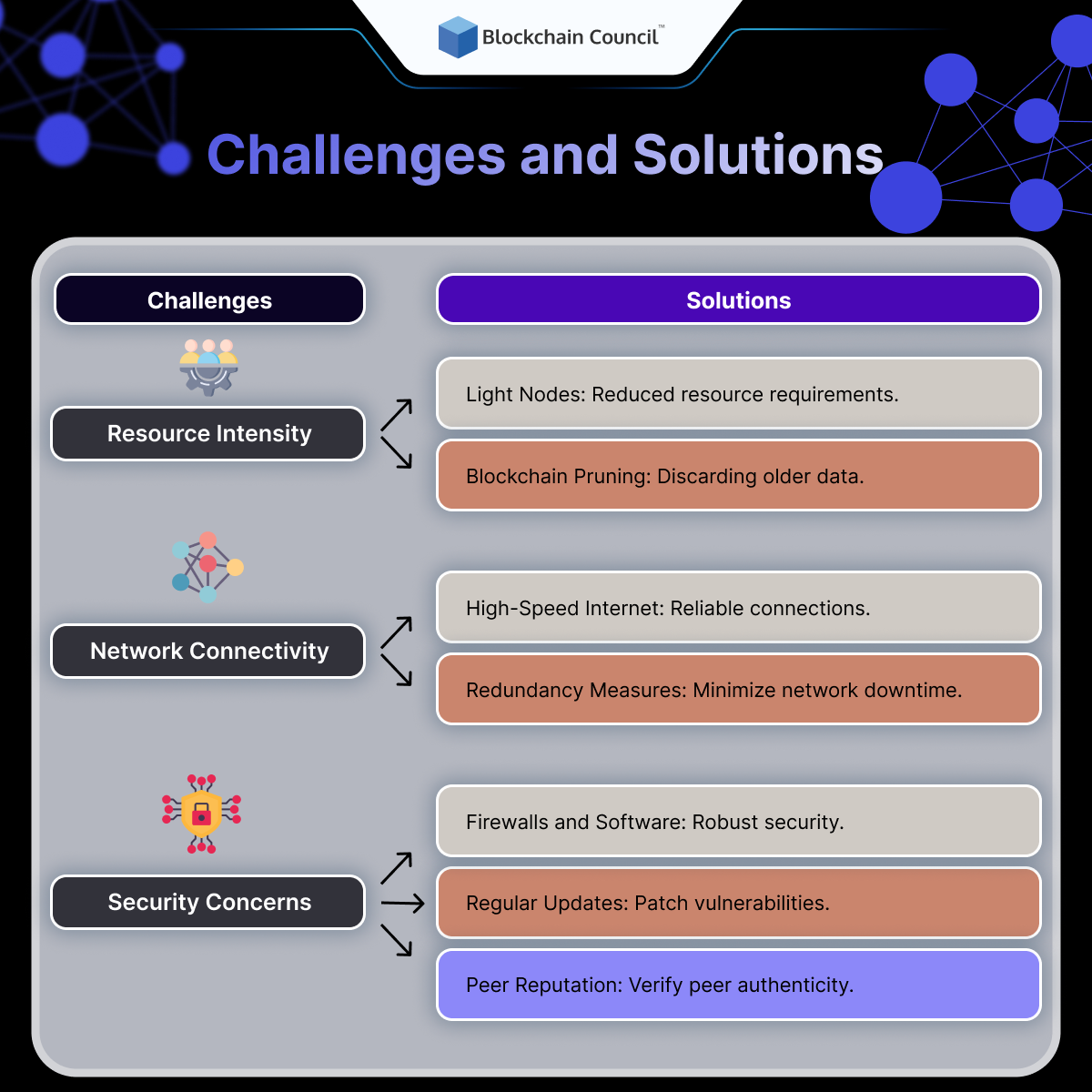
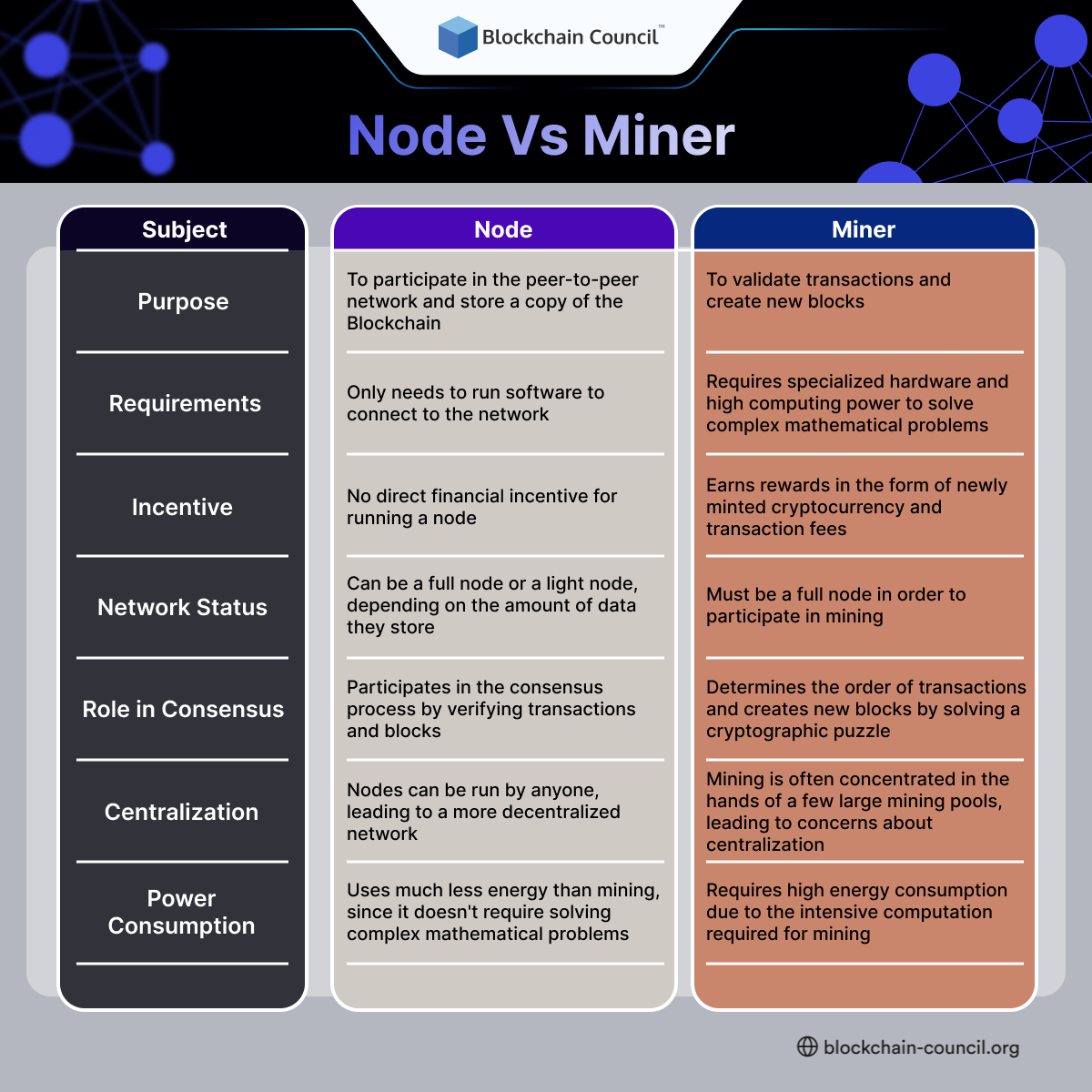
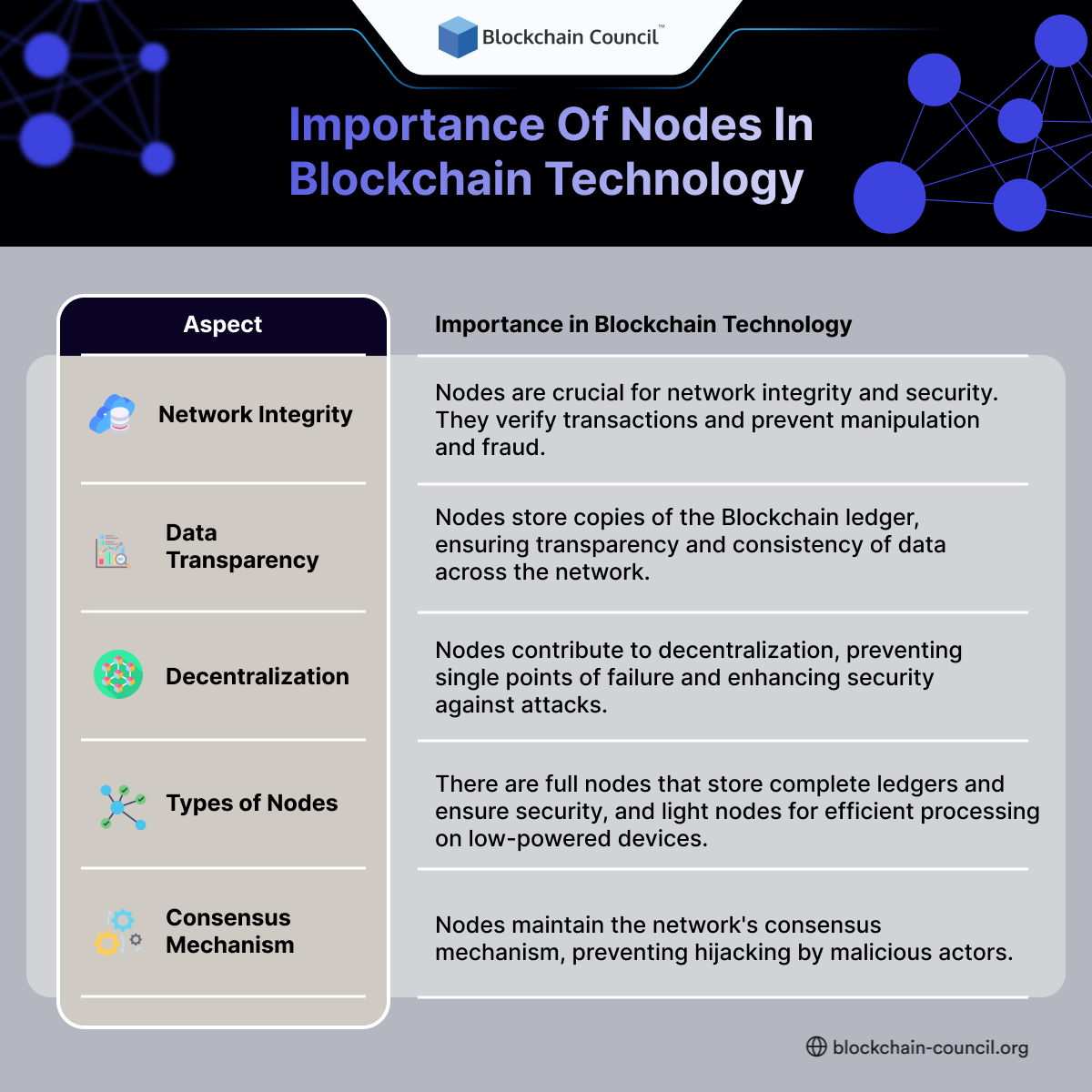
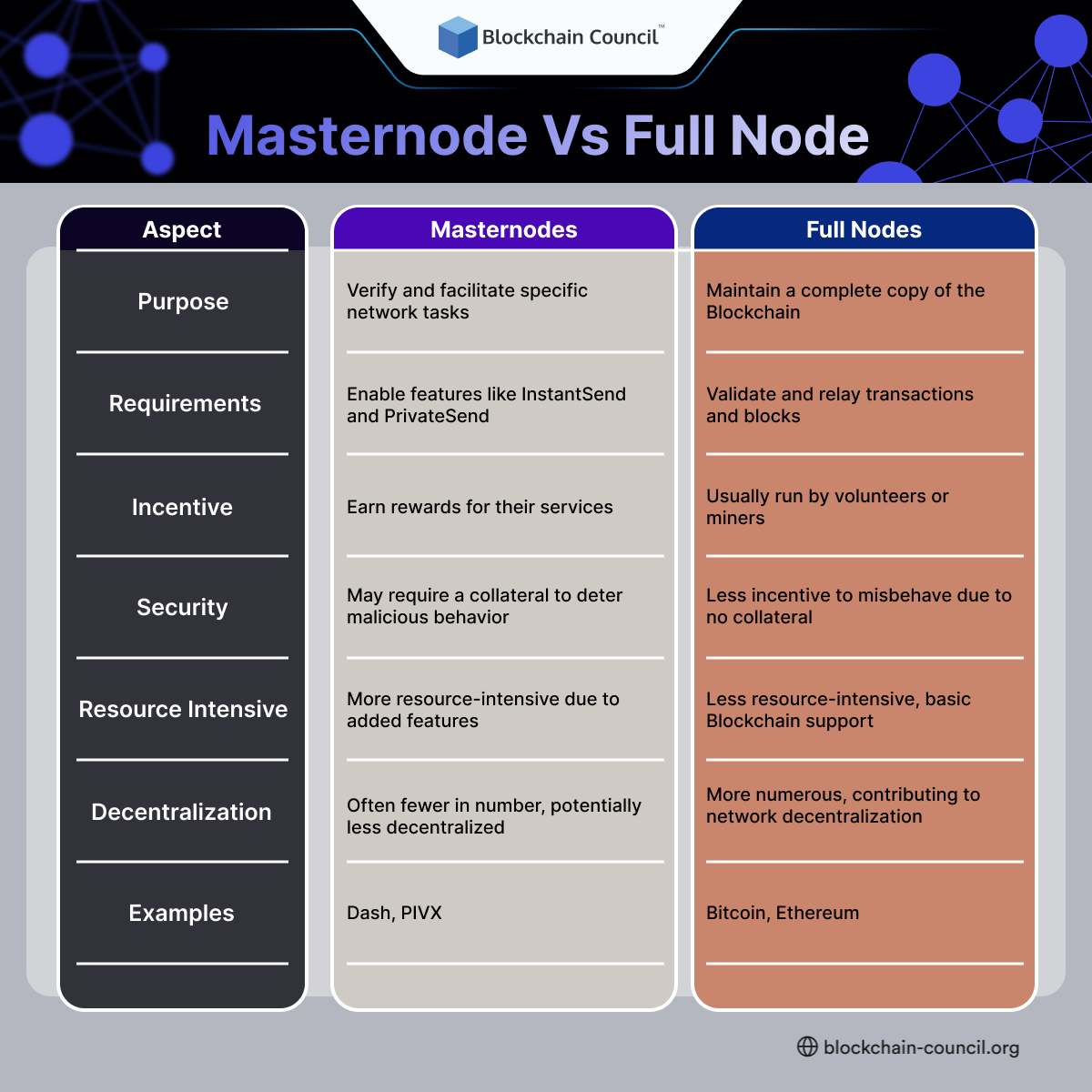
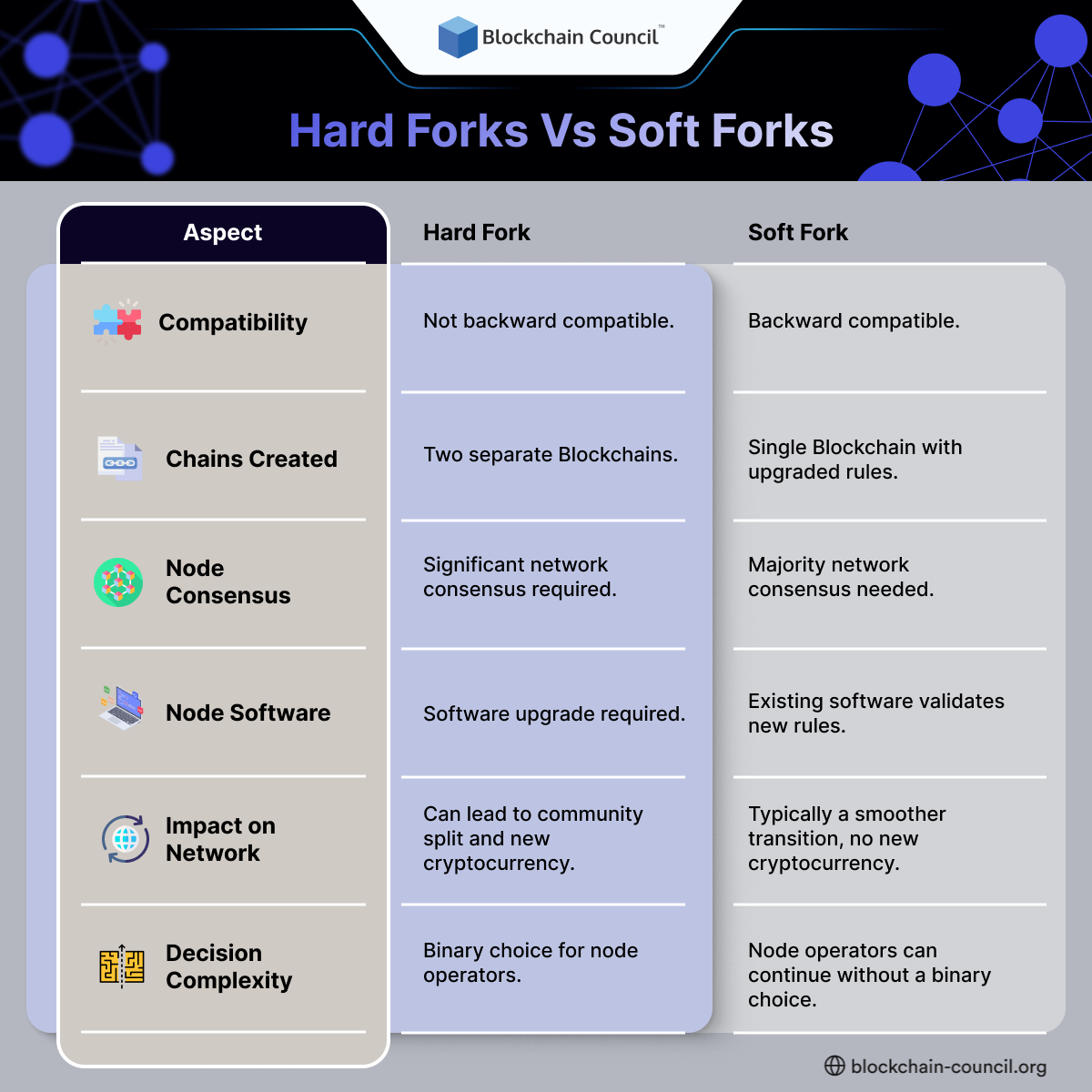
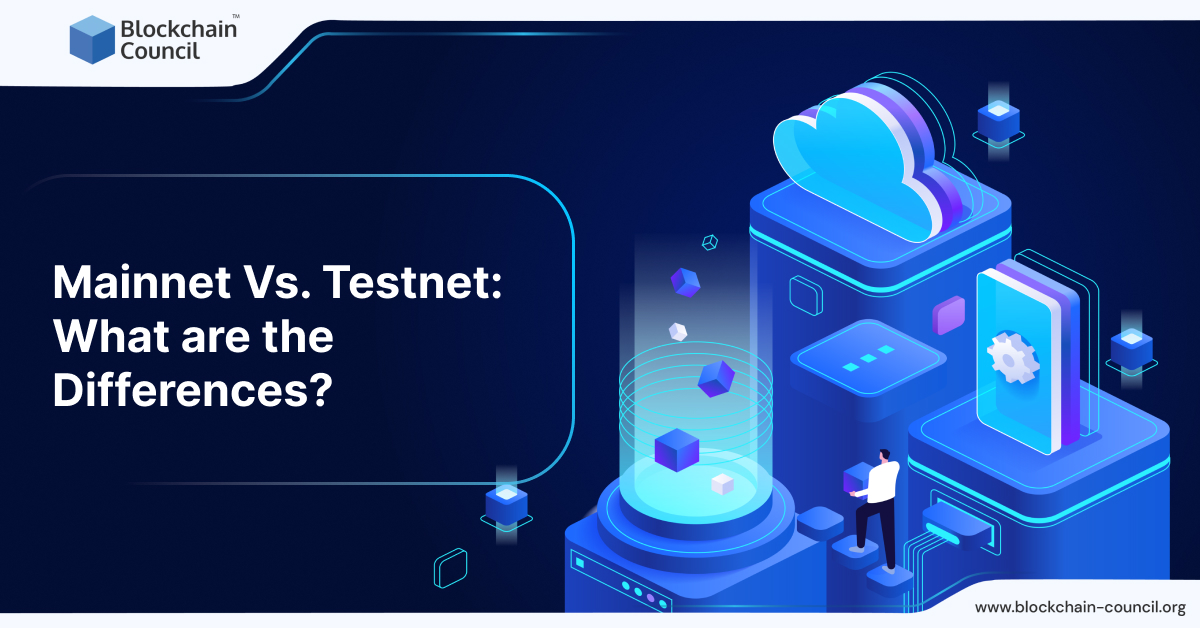
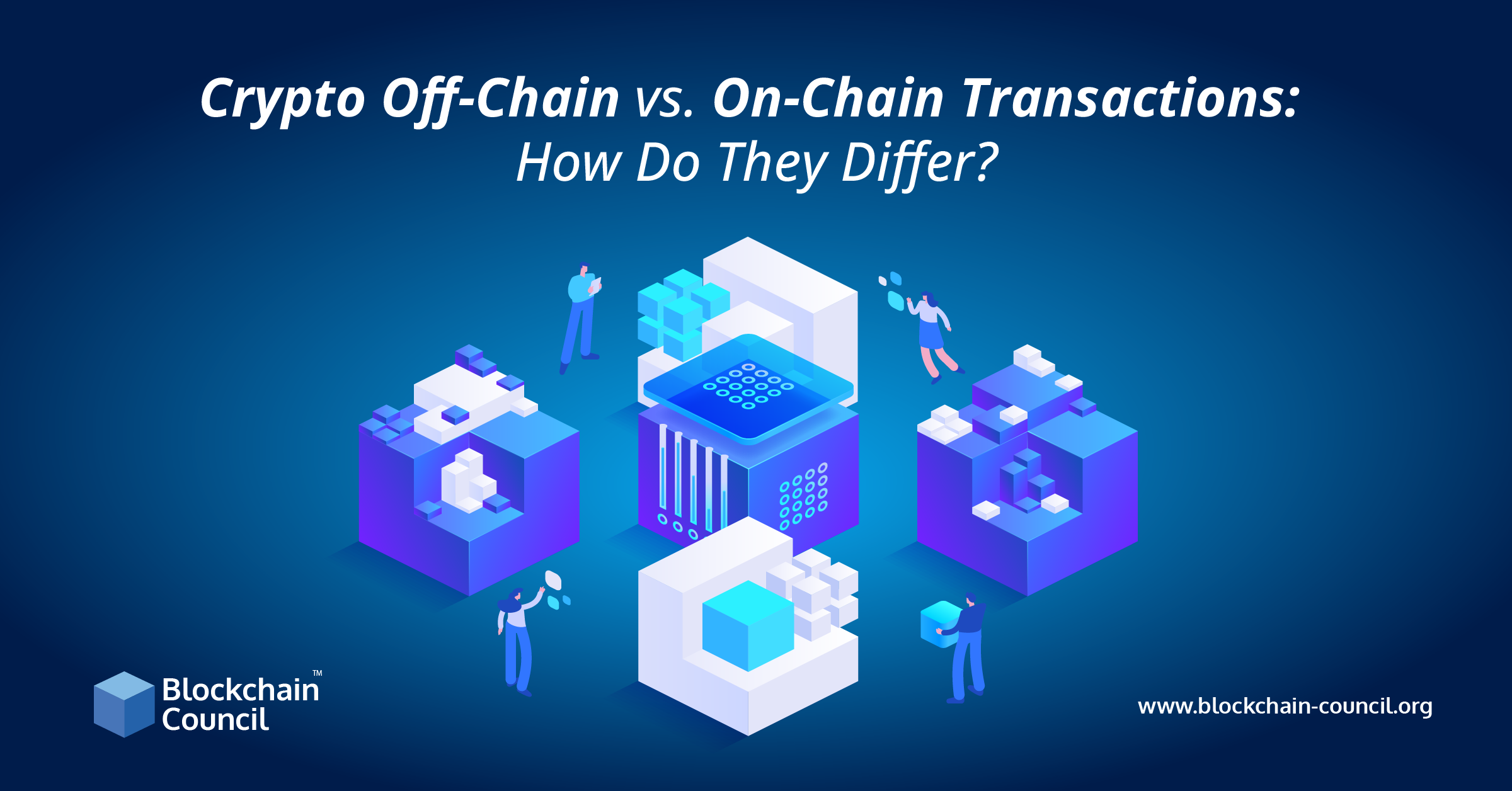


 Guides
Guides News
News Blockchain
Blockchain Cryptocurrency
& Digital Assets
Cryptocurrency
& Digital Assets Web3
Web3 Metaverse & NFTs
Metaverse & NFTs
